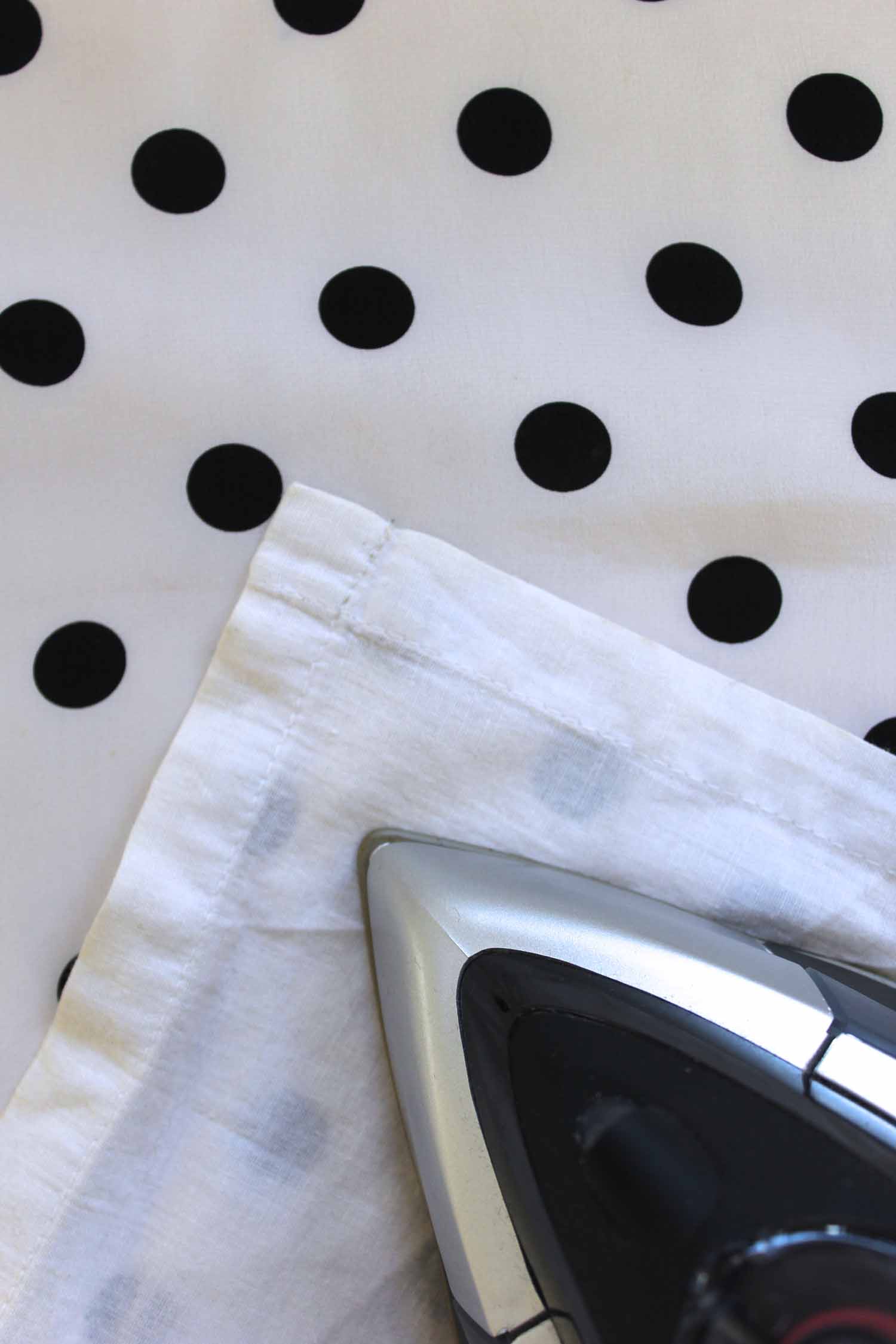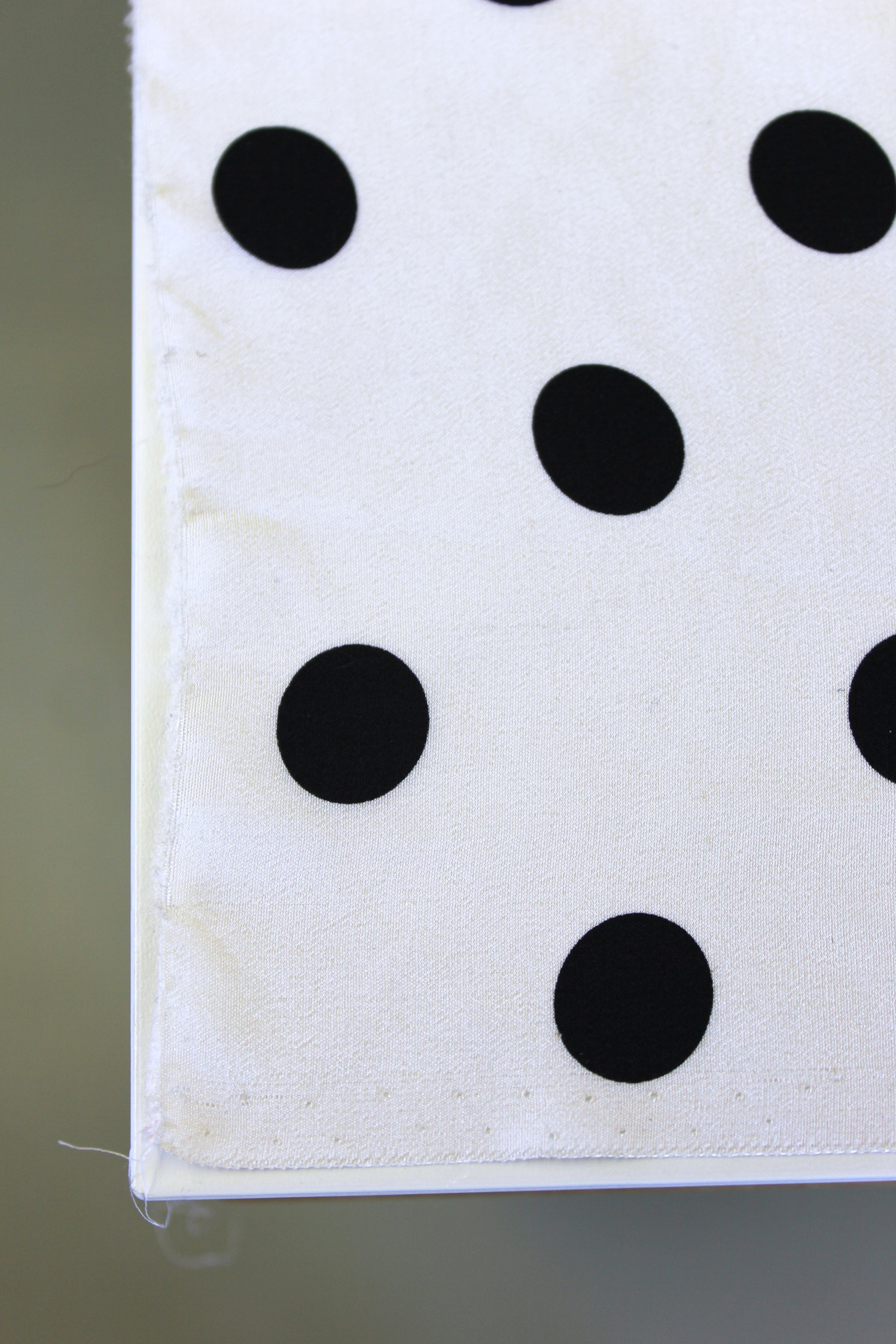Inspired by the silk nightdresses on last weeks ‘Great British Sewing Bee’, Ditto Fabrics in Brighton asked me to guest on their blog, and write a few pointers about working with silk. When I started writing all my ideas down I realised quite how many tips I had, so I included my favourites and am pleased to share them here with you too.
First of all, there are so many types of silk that lumping all silk fabrics together and saying “treat them like this…” would just be wrong. These tips are actually for any slippery fabric, which amongst others includes crepe backed satin, crepe de chine, chiffon, georgette and habotai, these fabrics are all commonly found in both polyester and of course, silk.
Now that I’ve set that straight, here are some tips for working with slippery fabrics…
Squaring up
Straighten the grain of your fabric, either by tearing across the grain from a snip on the selvedge, or by pulling a thread from the selvedge and carefully cutting along the pulled thread.
Lay your fabric on a flat surface with the selvedge and cut/torn edge at perfect right angles to one another, if you have a cutting mat this is perfect, or use the square corner of a table as a guide. Now you can lay your fabric out ready for the pattern, safe in the knowledge that your grain lines are true
Laying out
Weigh down the corners of your fabric to stop to from wafting every time you move around the project. You can buy special fabric weights, but if like me you don’t have any, a paper back book or (clean) mug coaster will do the trick- basically avoid using objects that could mark the fabric or leave an imprint.
Before you pin your pattern down, test your pins in a scrap of you fabric to make sure they easily pierce the fabric without dragging or leaving a hole. If possible use special silk pins, they are longer and finer than regular pins. Carefully lay, then pin your pattern within the seam allowance, being sure to double check those grain lines are still straight.
If you are sewing long seams or complicated curves then marking extra notches on the pattern could help you keep the fabric from bunching or puckering. Measure along the seam allowances and add markings to the pattern pieces along corresponding seam edges.
Cutting out
Check your scissors or rotary cutter on a scrap of your fabric to check there are no burrs to snag the fabric.
Now personally i prefer to use scissors (after a nasty accident when a rotary cutter took the end of my finger off), but using scissors to cut very slippery fabrics can be a challenge, especially if you tend to lift the fabric up when cutting out. Try to keep the lower blade in contact with the surface below, and use long smooth cuts rather than nibbling at the fabric.
Laying fine tissue paper beneath your fabric and cutting through both it and your fabric can help prevent slipping between the scissors.
If you really struggle then using a rotary cutter and a cutting mat could be your saving grace. Just be sure to keep the mat beneath the blade to avoid slicing into expensive furniture!
Sewing
Use a brand new, very fine needle (60/8 or 70/10) and again, test the stitches on a scrap of fabric before working on your garment.
I find that a good quality polyester thread is the best for sewing silk as it has a natural stretch and is readily available in a myriad of shades. Having said that, for visible hand finishing I would use a cotton or silk thread.
To avoid lightweight fabrics getting ‘sucked’ down the hole in the machine plate, put a small piece of masking tape over the hole (but not over the feed dog) before sewing fine fabric – the needle will create a hole just big enough for itself to pass through without dragging the fabric into the machine.

To stop fine fabric bunching up at the beginning of a seam sandwich the raw edges between tissue paper, begin the seam on the tissue, continuing onto the fabric. Tear away the tissue after sewing.
Pressing
Water marked fabric is very hard to rescue, so if your iron has a tendency to drip or spit, then turn the steam off and avoid heartbreak.
Use a pressing cloth when working with silk, a cotton lawn hanky is perfect, but if you want to splash out then a silicone pressing sheet is a great investment.

Phew! I intended to give you a brief list of tips, but as you can see there are loads of little things that make it easier to work with slippery fabrics. If you only take one tip from this post then let it be this… Test every single process on a scrap of your fabric before committing to it, this way you should avoid any nasty surprises.
One last little thought…
If working with slippery fabrics is a new challenge for you then choose a relatively simple pattern – preferably one that you’ve used before, at least then you can concentrate on the techniques rather than demystifying a new pattern.
Well I hope these tips help you, happy sewing!



